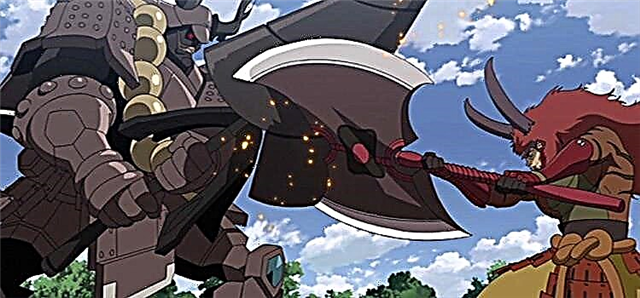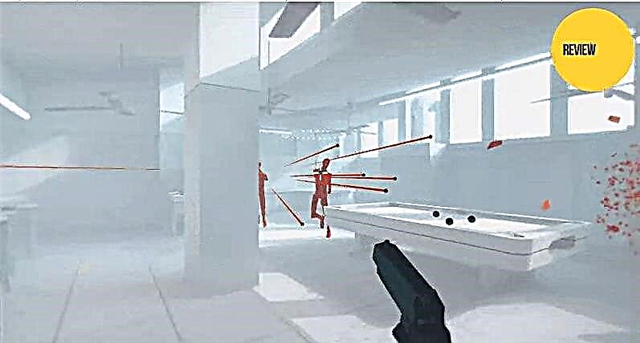The Italian Renaissance (Italian Renaissance) is marked by a period of major cultural changes in Europe, in the period from the XIV-XVI centuries. It was from this era that a constellation of famous Italian artists emerged, admiring and showing the whole world the beauty of nature and the human body. So let's take a look at 10 of the most famous masters of the Italian Renaissance.
1. Raphael Santi
Raphael Santi (known to all of us as Raphael) was born in Urbino to Giovanni Santi, a court painter. Young Raphael began his apprenticeship at court, where he was inspired by the works of great artists such as Andrea Mantegna and Piero della Francesca. Raphael was also a pupil of Pietro Perugino, and his early works reflect the influence of his teacher, a representative of the Italian Renaissance. Between 1500 and 1508, Raphael worked in central Italy, and was known for his depictions of Madonnas and portraits. In 1508, Pope Julius II asked him to decorate the papal rooms in the Vatican, where he completed his best works, such as the "School of Athens" in the Stanza della Senyatura.
"Santi"
2. Leonardo da Vinci
The works of Leonardo da Vinci are often considered the personification of humanistic ideals during the Italian Renaissance. Leonardo da Vinci was a master of various art forms, however, he gained fame thanks to his paintings. Leonardo was the illegitimate child of a Florentine notary and a peasant woman. The young boy formed his style while studying in the studio of the Florentine painter Andrea del Verrocchio. Unfortunately, only 15 of his paintings are available nowadays, among them "Mona Lisa" and "The Last Supper" - two of the most recognizable and imitated works.
Mona Lisa. Louvre Museum
3. Michelangelo
Like his contemporary Leonardo da Vinci, Michelangelo was a master of various artistic fields, the most important, of course, was painting. The Vatican's Sistine Chapel houses some of the most impressive frescoes in the history of Western art: depictions of nine scenes from Genesis on the ceiling and the Last Judgment on the altar wall by the artist. Michelangelo completed the frescoes on the chapel ceiling in approximately four years, the composition covers more than 500 square meters and includes at least 300 images. This extraordinary work of art undoubtedly influenced many Baroque decorators over the years to come.
Sistine Chapel ceiling
4. Sandro Botticelli
Another painter belonging to the famous Florentine school is Sandro Botticelli. Little is known about his youth, it is obvious that he was a student of Fra Filippo Lippi, and was inspired by the monumental paintings of Masaccio. The graceful painting of the Madonna and Child, the early Renaissance master Botticelli, as well as his paintings on the altar walls, life-size paintings became known during his lifetime. First of all, he is known for two works depicting mythological scenes - "The Birth of Venus" and "Spring" - both paintings are housed in the Uffizi Gallery in Florence.
"The Birth of Venus"
5. Titian
Tiziano Vecellio, known as Titian, was the greatest Venetian painter of the 16th century. Titian is famous, first of all, for his ability to use colors and their shades - he equally mastered the skill of drawing portraits, landscapes, mythological subjects and religious themes. As a teenager, he worked with prominent Venetian artists such as Giorgione and Giovanni Bellini. He also painted for royalty throughout Europe, including King Philip II of Spain. During his career, Titian painted portraits of many of the foremost personalities of his time, from Pope Paul III to Holy Roman Emperor Charles V.
"Self-portrait". Prado National Museum
6. Tintoretto
Jacopo Robusti (Comin), known by the nickname Tintoretto (his father was a dyer or tintore in Italian), is next on the list of the leading Italian painters of the Renaissance. He combined the use of Titian's color and the dynamics of Michelangelo's forms. His work is characterized by large-scale subjects such as his work "The Last Supper". The painting is characterized by ingenuity, effective lighting - the play of light and shadow and the use of gestures and body movements in dynamics. Due to his passion for work and impulsive drawing, Tintoretto earned another nickname: II Furious.
"Self-portrait"
7. Masaccio
Masaccio left an indelible mark on the world of painting, although his life was short - he died at the age of 26. Born in 1401, he made significant contributions to painting through his skill in creating dynamic images and movements, as well as his scientific approach to perspective. In fact, he is considered by many to be the first great painter of the Italian Renaissance and the innovator of the modern era of painting. Masaccio's work was influenced by the works of the sculptor Donatello and the architect Brunelleshi. Unfortunately, in our time, only four works have survived, the authorship of which does not raise questions, while other works were written in collaboration with other artists.
Fresco "Miracle with a statier"
8. Domenico Ghirlandaio
Domenico Ghirlandaio was the head of a large and productive workshop in Florence, which also included his two brothers. Many, later famous artists, spent time in his studio, among them Michelangelo. The Early Renaissance painter became famous for his detailed plots, which often included leading personalities of the time - for example, he chronicled modern Florentine society. The most significant commissions he received were from Pope Sixtus IV, who summoned him to Rome to paint the Sistine Chapel.
"The Calling of the First Apostles"
9. Andrea del Verrocchio
You may have noticed that Andrea del Verrocchio has already been mentioned on our list. He had a tremendous influence on the successful painters of the Italian Renaissance. Among his students were the aforementioned Botticelli, Ghirlandaio and even Leonardo da Vinci. His patrons were the influential Medici family, representatives of the Venetian State and the Municipal Council of Pistoia. The versatile artist has produced many sculptures. There is only one known artistic creation signed by Verrocchio: the altar wall in the Cathedral of Pistoia. Despite this, many other paintings are attributed to his workshop.
"Baptism of Christ"
10. Giovanni Bellini
Born into a family of artists, along with his father Jacopo and brother Gentile, Giovanni Bellini completely changed painting in the Venetian region. By using clean colors and soft transitions, Bellini was able to create rich hues and emphasized shading. These innovations in color had a deep influence on other painters such as Titian. Bellini added disguised symbolism to many of his works, which is usually attributed to the Northern Renaissance.
"Madonna in the Meadow"
We recommend watching:
If you can't wait to fulfill your dream of learning to draw, then this series of video tutorials is what you need for the first step.



